
views
Speaking with a Sushi Chef
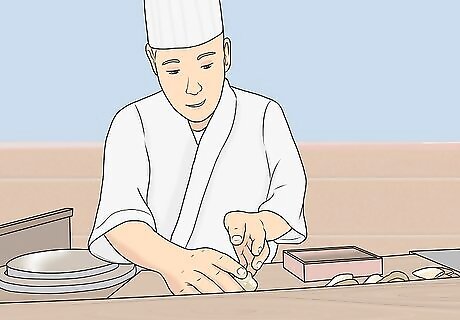
Sit at the sushi bar when you want to order sushi. Most modern restaurants serving sushi have a bar area separate from the rest of the dining room. Consider the bar to be the best seat in the house. Sushi chefs work behind the bar, so, when you’re sitting there, you can talk to them and watch them work. It’s the best place to be when your mind is set on fresh and flavorful sushi. In a lot of contemporary restaurants, you can still order sushi while sitting in the dining room. Reserving a table may be a better option if you’re with a large group of people. Sushi is best when it is fresh, and the fastest way to get fresh sushi is by talking to the chef. Even good sushi can become mediocre if it is left to sit on a plate too long waiting for a server to deliver it.
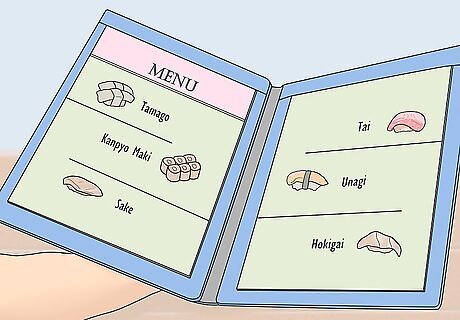
Take a look at the menu to decide what you want. When you arrive at the restaurant, look around for a list of the available sushi rolls. Most places will either have a menu you can look at or signs posted on the wall. These listings usually mention the ingredients or, at the very least, pictures of each roll. Use the menu to figure out what is available and what you would like. If dining room seating is an option, you will probably get a menu to look at. Since sushi has become popular around the world, many sushi bars in Japan offer English translations. If you’re outside of Japan, expect a menu in whatever language that country uses.

Ask the chef any questions you have about the menu. Sushi chefs generally are more than happy to help you enjoy their work. If you need clarification about how different types of maguro rolls taste, go ahead and ask. Sushi chefs don’t expect customers to be experts. You’re better off asking questions to ensure you get an enjoyable meal worth the price you pay. Keep your questions reasonable, however. The chef probably has a lot of work to do, so don’t ask them to explain the whole menu. Avoid asking if the fish is fresh. Good sushi restaurants exclusively use fresh fish. Instead, ask, “What do you recommend today?”
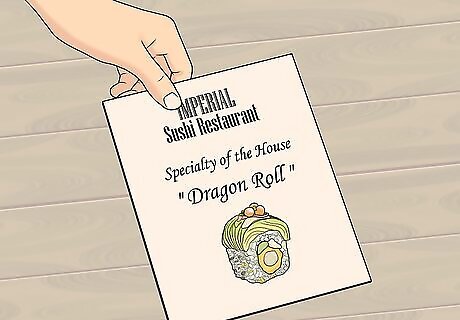
Offer the chef suggestions about what you like. If you’re unsure what to order, speak to the chef about what they have available. The chef can guide you toward tasty but affordable options. Usually, the restaurant’s specialty rolls are a good choice, but the chef may also have some alternatives not on the menu. Many chefs will come up with a special order if you ask for one. Remember to mention anything you don’t like or are not allowed to have. If you’re allergic to shellfish, let the chef know before asking for recommendations. If you don’t like wasabi, ask for your sushi to be prepared without it.
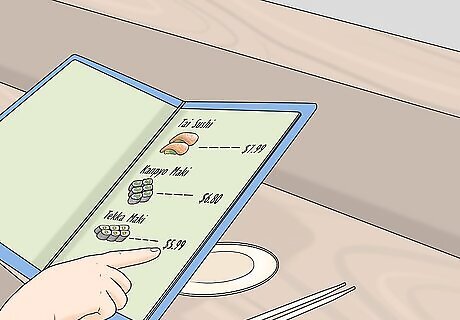
Give the chef an estimate of how much you are willing to pay. Ordering sushi can get costly, especially if you plan on asking the chef for recommendations. They assume that the price isn’t an issue. Discuss your ideal price range when you sit down at the bar. It will help the chef come up with an affordable menu for you to enjoy. If you’re looking for deals, go to a sushi bar for lunch. Most places offer different rolls with extras like soup. Check local places that serve vegetarian rolls and cheaper cuts of fish. Avoid the specialty rolls made with tons of different ingredients, since they are often expensive and not as tasty as you expect.

Say omakase if you want the chef to choose sushi for you. Omakase means “I trust in you.” When you order omakase style, you are asking the chef to invent a menu for you. The chef selects several types of sushi, serving them one at a time. It’s a good way to sample the chef’s skills and get a taste of the restaurant’s best ingredients. Omakase style can get very expensive. Be sure to discuss the pricing before confirming your order. If you establish how much you are willing to spend, the chef can customize a menu around your budget. Remember to tell the chef about what you like and don’t like so they choose sushi you can enjoy.
Placing and Eating an Order

Speak to a server about ordering anything other than sushi. Sushi chefs can handle sushi orders and that is it. The rest of the staff at a sushi restaurant takes care of everything else. If you need a drink, soup, or utensils, speak to them. They can also answer questions that you wouldn’t ask the chef, such as how to handle a piece of sushi. Never give the sushi chef money. Money carries a lot of germs, so they can’t touch it while they are working. Pay the server and consider buying the chef a drink for their service. If you’re sitting at a table, remember that you can also order sushi through the server. You don’t need to speak to the sushi chef at all in many modern restaurants.
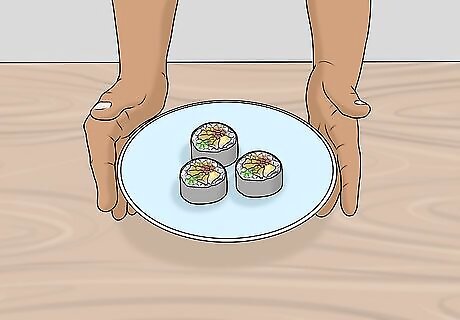
Order a limited amount of sushi at one time. Sushi is generally served a la carte. That means you choose individual dishes off the menu to order. Place your orders one at a time, waiting until you finish the first batch of sushi before ordering more. Ordering limited quantities will also give you a chance to sample the sushi if you’re unsure about what you like. If you order a large plate of sushi, the food has time to warm up and turn mushy before you eat it. Order in small quantities so you can enjoy your food while its fresh.
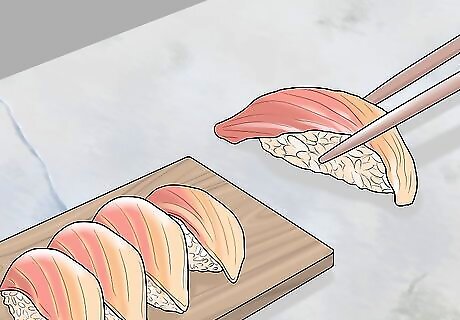
Eat lighter sushi before ordering heavier foods. If you’re looking for a general order to follow when getting sushi, stick with the lightest, thinnest rolls first. Big, heavy rolls often obscure the taste of lighter fare. Another way of looking at it is that lean fish come before fatty ones. That big maguro tuna roll you have your eye on is much more filling than a piece of sashimi. For a basic order, try starting with sashimi and whitefish like snapper and seabass. Move up next to yellowtails and tuna, followed by heavier fish like mackerel. End with sweet rolls made from eel or eggs. Sampling sushi this way is no different than eating an appetizer before a main course. If you’re familiar with wine, it’s like tasting lighter varieties before stronger ones. Keep in mind that this particular order is ultimately a recommendation. There are no rules at a sushi restaurant. If you want to change things up, no one will stop you.
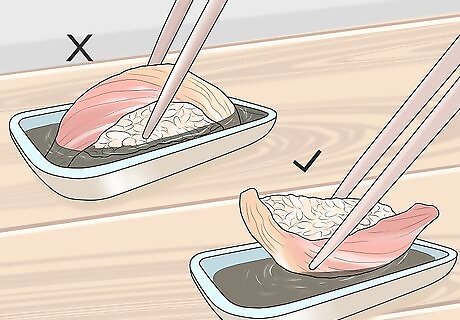
Skip asking for more soy sauce after you have been served. Sushi is typically served with a bottle of soy sauce. The server will pour some of it into a dish for you to dunk the sushi in. Since chefs make sushi to draw out the flavor of the fish, drowning rolls in soy sauce is unnecessary. Rice absorbs plenty of soy sauce, so you will end up turning the sushi into a mushy mess, Instead of dropping sushi into a bowl filled with soy sauce, pick up the roll with your fingers, chopsticks, or fork. Dip the fish side to coat it in a little bit of the sauce. If you really need more soy sauce, you can pour some into the bowl you’re using. During an average meal, you won’t need to do this if you’re eating sushi as intended.
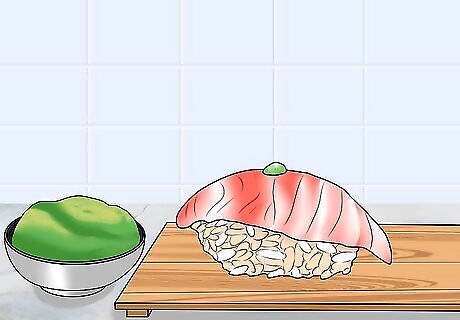
Use additional wasabi only if you need to add spice to sushi. Most sushi is made with a dab of wasabi on the rice. Although places generally serve a small dollop of wasabi along with the soy sauce, you aren’t obligated to use it. Wasabi is incredibly hot and can prevent you from enjoying what you have ordered. Try enjoying it the way the chef made it first, then add a little extra if you don’t mind the heat. Use chopsticks or a knife to spread a small dot of wasabi onto the fish side of the sushi. It isn’t meant to be mixed into soy sauce, although some people like it that way. Some places also keep a stockpile of fresh wasabi on the counter. You can use the jar to sprinkle a little wasabi on top of your sushi.
Choosing a Type of Sushi
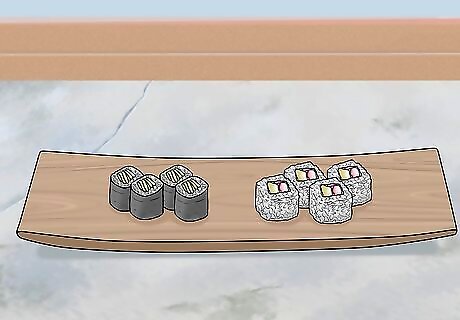
Start with cooked or vegetarian sushi if you’re nervous about raw fish. Although sushi is associated with raw fish, it can be made with all sorts of other ingredients. Try vegetarian options like kappa maki, or cucumber rolls. Also, California rolls are a good starting point and contain avocado, cucumbers, and imitation crab. Eel, sweet shrimp, clam, and mackerel are often served cooked. If it’s your first time, start with something familiar like shrimp or tuna, Those options don’t have a strong, fishy taste. Get a maki roll where the ingredients are rolled up in a decent helping of rice. Any rolls served tempura style, or fried, will be cooked. That includes inari, which is often just rice in a deep-fried shell.
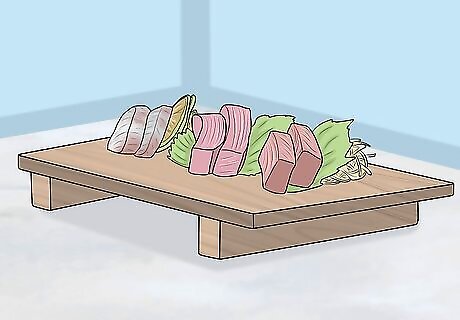
Order sashimi if you want fish without rice. Sashimi technically isn’t sushi, but it is a very common dish at every sushi restaurant. Sashimi is little more than sliced pieces of raw fish. Since it isn’t served on rice, expect it to be the best cuts from a high-quality fish. Just about any fish used in sushi can be made into sashimi. That includes tuna, yellowtail, and even squid. If you’re looking for a starting point, sashimi is a good choice. Use it as an appetizer while you wait for actual sushi rolls.
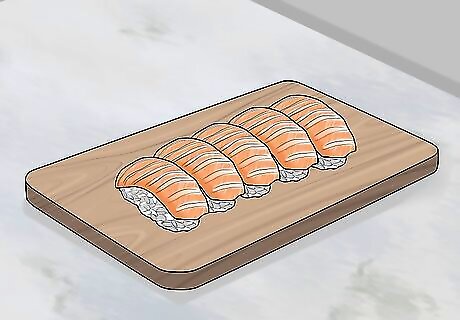
Pick nigiri for a light and simple type of sushi. Nigiri is what you get when you lay a piece of sashimi on top of a ball of rice. It usually doesn’t have the nori seaweed regular sushi comes wrapped in. It also lacks any extra ingredients that could mask the flavor of the fish. That makes it a great starting point for anyone unfamiliar with sushi. Ebi, or shrimp, is a very common type of nigiri. It can also be made with many other types of seafood, from scallops to tuna. If you’re not ready to try raw fish, look for nigiri with cooked shrimp or eggs.
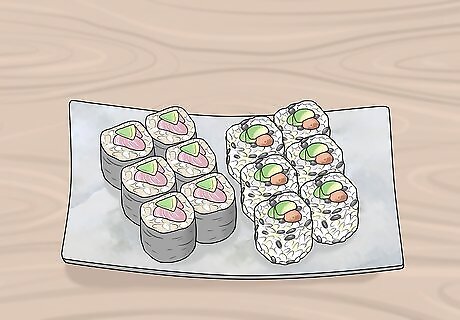
Get maki rolls if you want traditional sushi with multiple ingredients. Maki rolls are probably what you think of when you picture sushi. Maki is a combination of rice and ingredients rolled inside seaweed and cut into disks. It’s very customizable and also easy to eat and share. The extra ingredients can cover up the taste of the fish a little bit, but they can also make good sushi more flavorful. There are maki rolls for every taste. You can find rolls made with ingredients like cream cheese, avocado, various vegetables, and just about anything else that goes well over rice. For example, start out with something simple like a California roll. It is made with imitation crab, avocado, and cucumber. Although it isn’t a traditional Japanese roll, it’s a common place to start when ordering sushi for the first time. There are also smaller single-ingredient rolls called tekka maki. Uramaki rolls have rice on the outside.
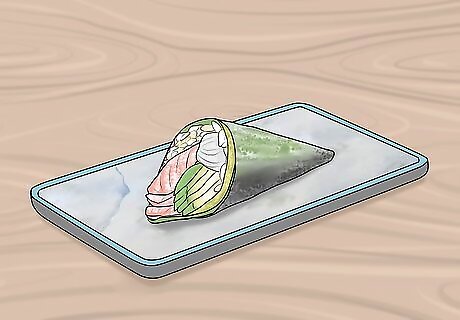
Choose temaki for a roll that is easier to pick up by hand. If you’re not comfortable handling other types of sushi, opt for temaki. A temaki roll is basically a maki roll shaped into a cone. Temaki rolls are often bigger than maki rolls, which means more ingredients and more seaweed wrapping. Temaki rolls are meant to be enjoyed individually. Since they have to be picked up by hand, they aren’t as easy to share.
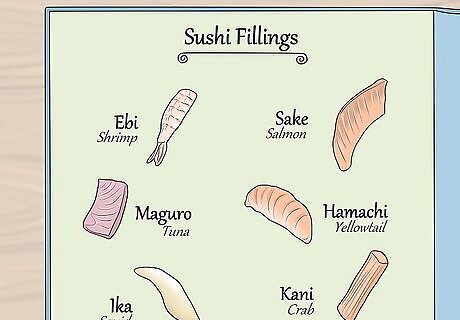
Select a type of fish or filling for your sushi. Before going to a sushi restaurant, try to learn the Japanese terms for different types of filling. It makes the ordering process much easier. Most places have menus, and you can always ask for help, so don’t feel pressured to memorize everything. If you learn about the most common ingredients, you most likely will be able to find something you enjoy. For example, ebi means shrimp and maguro means tuna. These are the most common types of sushi outside of Japan. For something unique, try ika, or squid. It is usually chewy. Tako, or octopus, is similar. Sake means salmon, hamachi means yellowtail, and kani means crab. There are also other types of rolls, such as ones made with unagi, or eel. Try tobiko and ikura, types of fish eggs, for something with a unique texture.
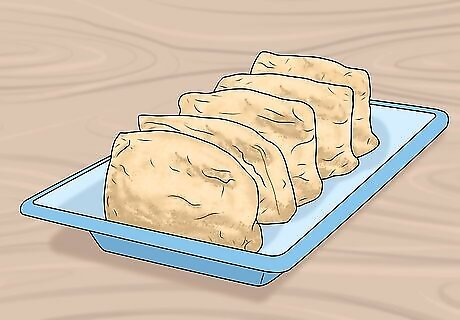
Get inari for something sweet and fried at the end of your meal. Inari is basically rice sushi rice stuffed inside a fried tofu shell. It can be filled with vegetables like carrots and cucumbers. Sometimes chefs add toppings like sesame seeds, avocado, fish eggs, or even fish. Although it isn’t exactly a dessert, it is sweet enough to taste like one. If you don’t want something fried, consider trying tamago. It is a sweet egg omelet formed into a square and wrapped in a strip of seaweed. Eel, or unagi rolls, often have a sweet flavoring due to the sauce used on them. They can also be a good way to close out a meal.



















Comments
0 comment